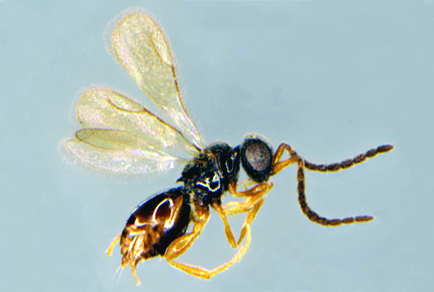Groundbreaking discovery: ZSI identifies new wasp species from Nagaland

Kolkata: The Zoological Survey of India (ZSI) made a groundbreaking discovery by identifying ‘Ceraphron initium’, a new species of parasitic wasp from Nagaland. This, along with the discovery of four more parasitoid wasp species in the Western Ghats, underscores the vital role of these tiny creatures in maintaining ecological stability.
The new species was discovered during a Science and Engineering Research Board (SERB) funded field survey in Nagaland. The Ceraphronoidea are sometimes overlooked and labelled as a dark taxonomic group because of their small size (0.8 mm to 1.5 mm) and complex morphology. In scientific terminology, “Dark Taxon” is a collection of creatures that were hitherto undiscovered owing to their distinctive and exceedingly enigmatic characteristics. In contrast to more recognisable species, these living forms inhabit settings and exist under circumstances that have long-evaded scientific observation. Advanced scientific research technologies enabled their discovery.
These species have various discernible traits, including exceptional wing patterns, body structure, pigmentation and particularly peculiar male genitalia. These characteristics distinguish it from other documented species members of the Ceraphronidae family. “This discovery is evidence of the abundant biodiversity in India and emphasizes the need for ongoing investigation and study in our natural habitats,” said Kaomud Tyagi, scientist-D at ZSI. An article in ‘ZOOTAXA’ delineates a detailed account of the findings and its consequences.
Meanwhile, a team led by Rajmohana K has discovered four new species: Calotelea acuta, C. chitraka, C. foveata and C. fulva. These Hymenopteran wasps contribute to the ecosystem health by regulating populations of various insect species. Dhriti Banerjee, director ZSI said: “The team plans to focus on molecular and bioecological studies of these groups in the future. There is a need for extensive taxonomical studies on such lesser-known insect groups, as they can have important implications for sustainable agriculture.”
Published in the European Journal of Taxonomy, this research increases the total number of Calotelea species in India to 25. While the biological roles of these species are still being explored, their importance in maintaining ecosystem balance and supporting sustainable agriculture is undeniable.



